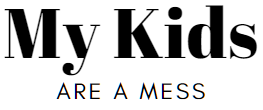Teaching Kids Sign Language
There are several approaches to teaching kids sign language. These include singing and signing, using gestures and verbal cues, and introducing signs naturally. These techniques are highly effective and will make signing a more natural part of your child’s daily life. This article explains each method in detail. For best results, use one of these methods in conjunction with your child’s daily routine. Here’s how you can get started.
Sing and sign to teach kids sign language
If you want your child to learn sign language, start with basic signs. If you’re starting from the very beginning, start with signs that sign for common meals. Then move on to the more complicated signs such as those for taking the bathroom, using the toilet, and addressing family members. Remember, the baby will need time to internalize the signs. Here are a few tips to help you get started. Sing and sign to teach kids sign language:
Baby sign language is a great way to start your child learning language. Babies learn more signs than just the basics, and they’ll soon be able to use them for more than just basic needs. And, as they become older, you can incorporate the hand signs with verbal cues. Your child’s sign language skills will grow with time. And, you’ll never go wrong by trying it out!
Learning sign language is a great way to get your child started on a path to becoming a speech-language pathologist or audiologist. There are many benefits to learning this language early on. The primary benefit is that it helps parents and babies communicate with each other. Sign language will help your child develop a better understanding of spoken language before he or she can talk. The benefits of learning sign language are endless and will last a lifetime.
It is important to begin teaching babies sign language as early as possible. This will decrease frustration and increase your baby’s confidence in you as their caregiver. Many parents report fewer temper tantrums once their babies start to understand the sign language. Also, it will help them become more confident and independent. This will also help them to learn words sooner. It’s best to start teaching your baby sign language as early as six months old.
Using gestures with verbal cues to teach kids sign language
Using gestures and verbal cues together to teach kids sign language can have a variety of benefits. Sign language teaches children to express emotions and convey messages in the present, while gestures are primarily used to express the non-present. Gestures are also used to convey information from the past, the future, and even hypothetical worlds. This combination helps kids understand the basics of the language and encourages them to speak in the future.
Babies learn best when they initiate the lesson, rather than having an adult label objects. While adults can teach babies to point at objects in their environment, gestures are crucial to learning and deciphering new language. Ideally, you should use gestures that are easy for babies to understand, while supplementing speech with pantomime. The following are some tips for parents who want to introduce gestures to their children.
Begin by modeling the signs. You can use these gestures to demonstrate the signs you are trying to teach. Then, respond to the non-verbal cues your child makes. This doesn’t necessarily mean you need to teach your child sign language. A natural gesture like “wa-wa” can communicate the same concept. It’s also important to recognize that children learn language best when their parents help them.
While building on the spontaneous gestures a baby already knows, it’s also beneficial to introduce non-iconic signs, such as eat, drink, and all gone. These gestures can be learned by babies who are just a few months old. They can also improve hand-eye coordination as a result. Using gestures with verbal cues to teach kids sign language can have a range of benefits, including boosting the cognitive and emotional development of the child.
While the end goal of learning sign language is verbal communication, introducing sign language to your child will help them interact better with adults. Signing will help them communicate their needs and wants without relying on guesswork. By using words with hand motions, your child will develop a new cognitive skill called symbolic function. When you are interacting with your child, you’ll have a lot more fun with him or her.
A key role for gestures in learning language is its causal role. When spoken, it can promote language learning by helping children elicit timely input from their communication partners. It can also influence a child’s cognitive state, making it easier to learn the language. In fact, there’s an increasing body of evidence that gestures are important in language learning. It is important to remember that gestures can influence cognition, which is why a child’s first language will be more likely to become verbal than non-verbal.
One of the most important things to remember when teaching your child sign language is to watch what happens to them in their daily lives. Children learn new things and can build on them by watching their environment and learning from their parents. While this might be a little difficult to watch, it’s worth it to keep trying. In addition to the importance of observing your child’s nonverbal language, it’s also important to remember that there’s no one right way to learn a language.
Introducing signs naturally
There’s no better time to introduce signs to your child than the beginning. They are constantly learning to express themselves. It’s not uncommon for babies to hold their arms out to ask for something or point to an object that piques their interest. And since we all love to communicate, there’s no better time to begin than now. Your child might even start using signs on a daily basis, such as when he wants his favorite food.
One mistake many parents and therapists make is adopting the child’s immature version of a sign. They then assume this is the correct way to sign and continue to use it. This is a mistake because children cannot learn a new sign without seeing an adult modeling it first. Instead, introduce new signs naturally, in which your child mimics you while you model them. Once your child learns the signs, they’ll be able to communicate with members of the community and teachers.
During the first year of your child’s life, it’s important to keep the process natural and fun. While baby signing may take some time, the end result will be worth it. Keeping your child’s interest in the process will help keep him or her interested in the signs. The process can be fun as long as it is engaging and your baby enjoys them. You’ll find that your child will be excited to learn more about sign language.
You can start introducing signs naturally when teaching your baby at about six months of age. Babies often mimic gestures even before they can express them verbally. In addition to teaching the signs naturally, you should also introduce them to objects that babies are familiar with. For example, if your child loves milk, you can introduce her to the sign for “milk” by making two fists, extending her middle fingers and bringing them back to their fists. The same goes for “water”. Tap her index finger against her chin.




